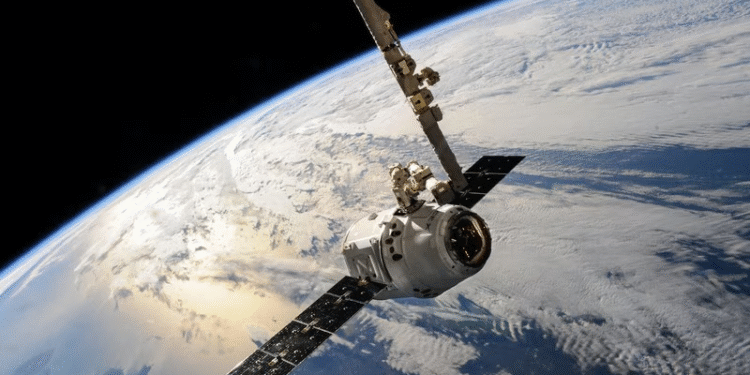The advent of the Internet of Things (IoT) has been instrumental in forging new connections and enabling smart infrastructures across various sectors. Yet, despite these advancements, numerous areas remain unconnected, often due to geographical challenges or the sheer cost of traditional connectivity solutions. However, a new frontier is emerging in the realm of communication technologies – the IoT satellite phenomenon – set on connecting the unconnected and catalyzing an era of global inclusivity.
I. The Emergence of IoT Satellite Technology
IoT technology thrives on the concept of embedding internet connectivity into everyday objects, allowing them to send and receive data. The extension of this connectivity through satellite networks is groundbreaking, as it bypasses terrestrial limitations, enabling reliable, global coverage. This satellite-based IoT framework offers a robust solution for regions where establishing ground infrastructure is either impractical or prohibitively expensive.
II. Bridging the Connectivity Divide
The implementation of iot satellite communications heralds a transformational leap in connecting remote, rural, and maritime regions. For the first time, areas cut off from conventional networks can participate in the digital revolution, enhancing their economic and social opportunities. As satellites orbit above, they provide a lifeline for people and devices, thereby promoting equity in digital access regardless of one’s global position.
III. Encouraging Sustainable Development
Satellite-based IoT goes beyond mere connectivity. It paves the way for sustainable development by offering solutions in sectors such as agriculture, logistics, and environmental monitoring. Farmers in isolated regions can now receive crucial data about weather patterns and soil conditions, leading to improved crop yields and resource management. Additionally, iot satellite technology plays a critical role in tracking the movement of goods, ensuring that supplies reach even the most secluded areas reliably.
IV. Advancing Disaster Response and Management
In the event of natural disasters, terrestrial networks often fail, leaving affected populations out of reach. IoT satellite systems fill this gap by maintaining communication channels when they are needed most. Emergency services can use satellite connectivity to coordinate relief efforts, while affected individuals have a means of reaching out for aid and support, illustrating the vital role of this technology in saving lives and rebuilding communities.
V. Facilitating Scientific Exploration
The applications of IoT satellites stretch into the far reaches of scientific exploration. Researchers operating in polar regions, deserts, or on the ocean can leverage satellite connectivity to send data back to their teams, enabling real-time progress in fields like climate science and oceanography. Such connectivity is pivotal in expanding our understanding of the planet and informing conservation strategies.
VI. Challenges and Considerations
Despite its many benefits, the deployment of IoT satellite technology is not without challenges. Issues such as orbital debris, frequency spectrum allocation, and the need for interoperability among different systems are among the hurdles to overcome. Moreover, ensuring data security over satellite networks remains a key concern, given the sensitive nature of the information being transmitted.
VII. From Vision to Reality
Turning the vision of global IoT connectivity into reality requires the collaboration of governments, private entities, and regulatory bodies. By fostering partnerships and embracing innovation, the collective effort can break down the barriers preventing universal connectivity. Initiatives to streamline satellite launches, standardize communication protocols, and promote sustainable space practices are crucial steps in this journey.
VIII. The Economic Impacts
The expansion of IoT satellite communications has profound economic implications. By unlocking new markets and creating a more inclusive economic landscape, businesses have the opportunity to tap into previously unreachable audiences. This opens up a world of possibilities for local entrepreneurs and global corporations alike, stimulating growth and encouraging investment in unconnected regions.
IX. Revolutionizing Everyday Life
For individuals in areas covered by IoT satellite technology, the shift in connectivity translates to tangible changes in daily life. Access to telemedicine, online education, and digital commerce can lead to improved health outcomes, broader educational prospects, and greater economic freedom. As this technology matures, it promises to reshape the fabric of these communities for the better.
X. The Role of Policy and Regulation
Effective policy and regulation are paramount to the success of iot satellite initiatives. Policymakers must navigate complex considerations involving spectrum use, cybersecurity, and privacy. Transparent, forward-looking regulations that address these issues while encouraging innovation will be key to unlocking the full potential of satellite-based IoT.
XI. The Future of Global Connectivity
The future of global connectivity lies in the successful incorporation of satellite IoT solutions into the broader communications ecosystem. As the technology advances, we can expect higher throughput, lower latency, and more compact, cost-effective satellite deployments, further extending the reach of high-speed, reliable internet services to every corner of the globe.
XII. Conclusion
In conclusion, the integration of IoT satellite technology is rapidly transforming the communication landscape, offering unprecedented levels of connectivity to previously isolated areas. As this innovative solution surges forward, it redefines the boundaries of digital access, propels sustainable development, and fosters global solidarity. By connecting the unconnected, satellite IoT is indeed revolutionizing communications, ensuring that no individual or device remains beyond the reach of the digital world.
In a digital era that thrives on connectivity, the advancements in IoT satellite technology brought forward by organizations like Myriota are not only impressive but essential for bridging the divide between the connected and the unconnected. As we look towards a future where every asset, device, and individual on the planet has the potential to be interlinked, the significance of satellite IoT becomes even more pronounced, promising a world where geographical constraints are no longer barriers to participation in our increasingly interconnected global community.













